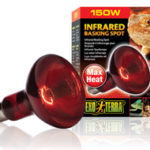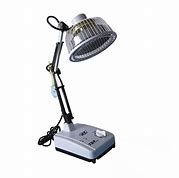Last Updated on 6 months by Francis
For centuries, saunas have been used for their therapeutic effects, providing a relaxing and healing experience for the mind and body. In recent years, infrared saunas have emerged as a popular alternative to traditional saunas, promising similar benefits with innovative heating technology.
So, what is the difference between sauna and infrared sauna? Let’s explore the key differences between these two immersive wellness experiences, including their heating mechanisms, health benefits, and overall experience.
Contents
Key Takeaways
- The difference between sauna and infrared sauna lies in the heating mechanisms.
- Traditional saunas use steam to heat the air, while infrared saunas use infrared waves to penetrate the body directly.
- Both saunas offer numerous health benefits, including improved circulation, detoxification, and relaxation.
- Infrared saunas offer unique benefits such as increased sweat production, targeted pain relief, and improved skin health.
- Choosing the right sauna for your needs depends on personal preferences, health goals, and budget considerations.
Understanding Sauna Therapy

Sauna therapy has been used for centuries as a way to promote health and well-being. This practice involves sitting in a heated room, typically with temperatures ranging from 150 to 195°F, for a period of time. Saunas can use a variety of heat sources, including wood, electric, gas, or infrared, to produce the heat that warms the room.
The benefits of sauna therapy are numerous, and range from improved circulation to decreased muscle tension. One of the primary benefits of sauna therapy is its ability to promote sweating, which can help rid the body of toxins and other impurities.
Studies have also suggested that regular sauna use can have a positive impact on cardiovascular health, reducing the risk of heart disease and stroke. Additionally, sauna therapy has been shown to be an effective treatment for chronic pain, particularly in those suffering from conditions such as arthritis or fibromyalgia.
Overall, sauna therapy is a safe and effective way to support your health and wellness. Whether you prefer traditional saunas or infrared saunas, incorporating regular sauna sessions into your routine can help you feel better and live a healthier life.
Traditional Sauna Explained

In this section, we will dive into the world of traditional saunas. Traditional saunas, also known as Finnish saunas, have been used for centuries for their various health benefits. They typically operate at higher temperatures than infrared saunas and use steam to generate heat. Let’s take a closer look at what makes traditional saunas unique.
Heating Mechanism
As mentioned, traditional saunas generate heat by pouring water over heated rocks to produce steam. This creates a high-temperature, high-humidity environment that promotes sweating and overall relaxation. Temperature ranges can vary between 170 to 190°F (77 to 88°C) and up to 20% humidity.
| Traditional Saunas | High-temperature environment | Operates using steam | Temperature ranges between 170 to 190°F (77 to 88°C) | High humidity up to 20% |
|---|
Construction
Traditional saunas are made of cedar or hemlock wood, with benches and a stove positioned in the middle of the room. The stove is typically made of metal and houses the heated rocks on top. The rocks can be heated using an electric or wood-burning stove. The wood construction allows the room to breathe, creating a natural and comfortable ambiance.
Traditional Sauna Experience
A traditional sauna experience involves multiple rounds of sweating with breaks in between to cool down. These cooling breaks may involve stepping outside or taking a cool shower. The high humidity in traditional saunas can make it challenging to breathe at first, but eventually, the body acclimates, making it easier to enjoy the experience.
Benefits of Traditional Saunas
Traditional saunas are known for their numerous health benefits. They can help improve blood circulation, reduce stress, ease muscle tension, and promote deep relaxation. Sauna therapy can also help relieve congestion and promote clear sinuses.
So, if you are someone who enjoys high temperatures and high humidity, a traditional sauna may be the perfect choice for you.
Infrared Sauna: A Modern Perspective
Infrared saunas are a new and innovative take on the traditional sauna experience. Unlike traditional saunas, which use steam to heat the air, infrared saunas use infrared waves to penetrate the body and heat it from the inside out. This unique approach has numerous health benefits that cannot be found in traditional saunas.
One of the most significant advantages of infrared saunas is their ability to promote detoxification. Infrared heat penetrates deep into the body, inducing sweat production and flushing out toxins. This process has been shown to be more effective than traditional sauna detoxification, as it targets harmful chemicals and heavy metals that are stored deep within our tissues.
Another benefit of infrared saunas is their ability to provide deep relaxation. The penetrating heat helps to relieve muscle tension, reduce stress, and promote a sense of calm and tranquility. This makes infrared saunas an excellent choice for people who struggle with anxiety, stress, or muscle pain.
| Traditional Sauna | Infrared Sauna |
|---|---|
| Uses steam to heat the air | Uses infrared waves to penetrate the body and heat it from the inside out |
| Requires high temperatures (160-200°F) | Requires lower temperatures (120-150°F) but still produces profuse sweating |
| Only heats the air around the body | Penetrates the body and heats it from the inside out |
| Less effective at detoxification | More effective at detoxification as it targets toxins stored deep within tissues |
Compared to traditional saunas, infrared saunas are less intense and require lower temperatures. This allows people who are sensitive to heat or have certain health conditions (such as hypertension) to enjoy the benefits of sauna therapy without putting themselves at risk.
Overall, infrared saunas offer a new and innovative approach to sauna therapy that provides unique health benefits. If you are looking for a more gentle and effective sauna experience, an infrared sauna may be the perfect fit for you.
Heating Mechanisms: Steam vs Infrared

One of the primary differences between traditional saunas and infrared saunas is the heating mechanism. Traditional saunas use steam to heat the air, while infrared saunas use infrared waves to directly heat the body.
In a traditional sauna, water is poured over hot stones to create steam, which raises the temperature of the air and causes the body to sweat. The humidity level in a traditional sauna can range from 10-20%, depending on the amount of water added.
Infrared saunas use far-infrared heating panels to emit radiant heat that penetrates the body’s tissues. This type of heat is more efficient than steam in heating the body directly, causing a deeper sweat at a lower temperature.
| Traditional Sauna | Infrared Sauna | |
|---|---|---|
| Heating Mechanism | Steam | Infrared Waves |
| Temperature | 160-200°F | 120-140°F |
| Humidity | 10-20% | 0-20% |
| Heating Time | 30-60 minutes | 20-45 minutes |
While traditional saunas require a higher temperature to achieve a similar level of sweat production, they do have the advantage of offering higher humidity levels, which can be beneficial for respiratory and skin health. Infrared saunas, on the other hand, are more efficient at heating the body and can provide a more intense sweat at a lower temperature.
Overall, the choice between traditional saunas and infrared saunas comes down to personal preference and individual health goals. If you prefer a more traditional sauna experience with high humidity levels and hotter temperatures, a traditional sauna may be the best option for you. If, however, you prioritize efficiency and a deeper sweat, an infrared sauna may be more suitable.
Health Benefits of Sauna

Sauna therapy has been used for centuries as a means of relaxation, detoxification, and overall wellness. Both traditional saunas and infrared saunas offer numerous benefits that can positively impact your health. Here are some of the benefits of sauna therapy:
- Promotes cardiovascular health: Regular sauna use may help improve blood flow, reduce blood pressure, and lower the risk of heart disease.
- Enhances detoxification: Sauna sessions can help remove toxins and impurities from the body by inducing sweat.
- Relieves muscle tension: The heat from saunas can aid in muscle relaxation and reduce soreness.
- Boosts immune function: Sauna therapy may help strengthen the immune system, making it easier for the body to fight off illness and infection.
- Promotes relaxation: Sauna sessions can be an effective way to reduce stress, anxiety, and promote overall mental wellness.
These are just a few of the many benefits of sauna therapy. Whether you prefer a traditional sauna or an infrared sauna, incorporating regular sauna sessions into your wellness routine can help improve your physical and mental health.
“The combination of sweating and increased circulation can help purify the skin, and the relaxation response can help reduce stress-related skin issues like acne and eczema.”
Unique Benefits of Infrared Sauna

While traditional saunas have been used for centuries for their therapeutic benefits, infrared saunas offer some unique advantages that make them a popular choice for many spa-goers. Here are some of the key benefits of infrared sauna:
- Increased sweat production: Unlike traditional saunas that rely on steam to generate heat, infrared saunas use infrared waves that heat the body directly. This can lead to a more intense and deeper sweat, which may contribute to greater detoxification.
- Targeted pain relief: Research has shown that infrared heat can help reduce pain and inflammation in the body, making it a popular choice for people with chronic pain conditions like arthritis.
- Improved skin health: Infrared saunas have been shown to promote collagen production and improve skin elasticity, helping to reduce fine lines and wrinkles.
- Weight loss: While sauna sessions alone won’t lead to significant weight loss, some studies have suggested that infrared saunas may help increase metabolism and promote fat burning.
Overall, infrared saunas offer a more targeted and intense therapeutic experience, making them a popular choice for people looking to address specific health concerns.
The Sauna Experience

The overall sauna experience can vary significantly between traditional saunas and infrared saunas. Both types of saunas offer unique benefits, and choosing the right one for your needs depends on your personal preferences and wellness goals.
Traditional Sauna Experience
Traditional saunas use steam to heat the air, creating a moist environment with high humidity levels. This type of sauna experience is often described as intense and invigorating, with temperatures ranging from 150-190°F.
The thick steam can make it difficult to breathe, but this can also be part of the therapeutic experience. Traditional saunas are often built with wood panels and have a distinctive, earthy smell.
One of the benefits of traditional saunas is that they are often larger and can accommodate more people, making them a social experience. They are also generally less expensive than infrared saunas, making them a popular choice for home installation.
Infrared Sauna Experience
Infrared saunas use infrared waves to heat the body directly, rather than heating the air. This produces a dry, comfortable heat that ranges from 120-150°F.
The lack of steam makes it easier to breathe, and the lower temperatures make it a more relaxed experience. Infrared saunas are often built with ceramic or carbon panels and have a more modern, sleek appearance.
One of the benefits of infrared saunas is that they are more efficient at heating the body, making it easier to work up a sweat and achieve the therapeutic benefits of sauna therapy. They are also often used for targeted pain relief, as the infrared heat can penetrate deeper into the body’s tissues.
Regardless of which type of sauna you choose, it’s important to listen to your body and not push yourself too hard. Always stay hydrated and follow recommended session durations and temperature limits.
In the next section, we will provide guidance on how to choose the right sauna for your needs and wellness goals.
Choosing the Right Sauna for You

Deciding which type of sauna is right for you depends on various factors, including your preferences, health goals, and budget considerations. In this section, we will offer guidance on how to make an informed decision between a traditional sauna and an infrared sauna.
Comparison of Sauna and Infrared Sauna
To begin, let’s compare the fundamental differences between a sauna and an infrared sauna.
| Sauna | Infrared Sauna |
|---|---|
| Uses steam to produce heat | Uses infrared waves to produce heat |
| Traditional construction with wooden walls and benches | Modern construction using infrared panels |
| Heats the air, which then heats the body | Penetrates the body, heating it directly |
| Generally operates at higher temperatures (up to 190°F) | Generally operates at lower temperatures (around 140°F) |
| Produces a high level of humidity | Produces a low level of humidity |
From this comparison, we can see that traditional saunas use steam to heat the air, while infrared saunas use infrared waves to directly heat the body. Traditional saunas generally operate at higher temperatures and produce a high level of humidity, while infrared saunas operate at lower temperatures and produce a low level of humidity. Infrared saunas also feature a modern construction with infrared panels, while traditional saunas have a more traditional construction with wooden walls and benches.
Sauna vs Infrared Sauna
When deciding between a sauna and an infrared sauna, it’s essential to consider your own preferences and health goals. Here are some factors to consider:
- Do you prefer a more traditional sauna experience or a more modern one?
- Do you want to experience a higher heat level, or do you prefer lower temperatures?
- Are you looking for a high humidity level, or do you prefer a low humidity level?
- Do you have any specific health concerns that could be addressed by the unique benefits of an infrared sauna?
- What is your budget? Infrared saunas are generally more expensive than traditional saunas.
Considering these factors will help you make a well-informed decision when it comes to choosing the right sauna for you.
Incorporating Sauna into Your Wellness Routine
Sauna therapy has a wide range of health benefits, both physical and mental. Incorporating regular sauna sessions into your wellness routine can be a great way to improve your overall well-being. Whether you prefer traditional saunas or the modern infrared saunas, there are several strategies for maximizing the benefits of sauna therapy.
Frequency
Depending on your health goals and lifestyle, the recommended frequency of sauna use may vary. However, most experts suggest using a sauna at least once or twice a week to experience the full range of benefits. Consistency is key, so try to develop a regular sauna routine that works for you.
Duration
The length of a sauna session can also impact its effectiveness. It is generally recommended to start with shorter sessions and increase the duration gradually over time. Beginners may want to start with 10-15 minute sessions, while more experienced sauna users can gradually work up to 30-60 minute sessions.
Hydration
It is important to stay hydrated before, during, and after sauna sessions to avoid dehydration and other health risks. Make sure to drink plenty of water before entering the sauna and bring a water bottle inside to sip on during the session. After the session, continue to drink water and replenish any lost fluids.
Post-Sauna Care
After a sauna session, it is important to take care of your body to maximize the benefits of the therapy. You may want to take a cool shower or plunge into a cold pool to help cool down and improve circulation. It is also recommended to rest for a few minutes and allow your body to fully recover before engaging in any strenuous activities.
Infrared Sauna Therapy
Infrared saunas offer a unique type of therapy that can enhance the benefits of traditional saunas. One advantage of infrared saunas is that they can operate at lower temperatures, making them more accessible to those who can’t tolerate high heat. Infrared heat also penetrates deeper into the body, providing a more intense therapeutic experience.
Adding infrared sauna sessions to your wellness routine can provide numerous benefits, such as improved circulation, relaxation, and pain relief. However, it is important to consult with a healthcare professional before beginning any new therapy, especially if you have any underlying health conditions.
Exploring Sauna Safety and Precautions
While the benefits of sauna therapy and infrared sauna sessions are numerous, it’s essential to understand the potential risks and safety considerations associated with these experiences.
Hydration is Key
One of the most critical safety precautions to keep in mind when using a sauna is hydration. The high temperatures can quickly lead to dehydration, so make sure to drink plenty of water before, during, and after your session. Avoid alcohol and caffeine, as these can further dehydrate the body.
Temperature Limits
It’s crucial to monitor the sauna’s temperature and never exceed recommended temperature limits. Generally, traditional saunas should not exceed 190°F, while infrared saunas are typically around 140-150°F. Excessive heat exposure can lead to heat exhaustion, which can be life-threatening.
Contraindications for Sauna Use
While sauna therapy is generally safe for most people, there are a few contraindications to be aware of. If you have any of the following conditions, it’s best to avoid sauna sessions:
- Pregnancy
- Heart disease
- Low blood pressure
- Severe dehydration
- Recent heart attack or stroke
Post-Sauna Care
After your sauna session, it’s essential to take proper care of your body. Drink plenty of water to rehydrate, and avoid showering immediately, as the body needs time to cool down gradually. Stretching and relaxation techniques can also be helpful.
By following these safety considerations and precautions, you can enjoy the numerous health benefits of sauna therapy and infrared sauna sessions with confidence.
Conclusion
We hope this article has helped you understand the key differences between saunas and infrared saunas. While both offer numerous health benefits, they differ in terms of their heating mechanisms, temperature control, and overall experience.
If you enjoy the traditional sauna experience, with its high humidity and steam, then a traditional sauna may be right for you. However, if you prefer a more targeted and deeper heat, with less humidity, then an infrared sauna may be a better fit.
In the end, it all depends on your personal preferences, wellness goals, and budget considerations. Whatever your choice may be, incorporating regular sauna sessions into your wellness routine can offer a variety of physical and mental health benefits.
What is the Difference Between Sauna and Infrared Sauna?
To recap, the main difference between saunas and infrared saunas comes down to their heating mechanisms. Traditional saunas rely on steam, while infrared saunas use infrared waves to penetrate the body’s tissue and produce heat. Additionally, traditional saunas operate at higher temperatures and humidity levels, while infrared saunas offer more targeted heat with less humidity.
Ultimately, both types of saunas offer unique health benefits and can be a valuable addition to your wellness routine. We recommend consulting with a healthcare professional before starting a sauna therapy regimen, particularly if you have any health conditions or concerns.
FAQ
What is the difference between a traditional sauna and an infrared sauna?
The main difference lies in their heating mechanisms. Traditional saunas use steam to heat the air, while infrared saunas use infrared waves to directly heat the body.
What are the benefits of sauna therapy?
Sauna therapy offers numerous benefits, including improved circulation, relaxation, detoxification, cardiovascular health, and muscle tension relief.
How does a traditional sauna work?
Traditional saunas heat the air with steam, creating a high-temperature environment that promotes sweating and relaxation.
What are the advantages of an infrared sauna?
Infrared saunas use infrared heat to penetrate the body, promoting deep detoxification, increased sweat production, targeted pain relief, and improved skin health.
How does the heating mechanism differ between steam saunas and infrared saunas?
Traditional saunas rely on steam to generate heat, while infrared saunas use infrared waves for direct heating. The temperature control and overall feeling also vary between the two types.
What are the health benefits of saunas?
Both traditional and infrared saunas offer benefits such as cardiovascular health improvement, detoxification, and muscle tension alleviation.
What are the unique benefits of an infrared sauna?
Infrared saunas provide increased sweat production, targeted pain relief, improved skin health, and potential assistance with weight loss.
How does the sauna experience differ between traditional and infrared saunas?
The ambiance, humidity levels, and sensations felt during a session can vary between traditional and infrared saunas.
How do I choose the right sauna for my needs?
Factors such as personal preferences, health goals, and budget considerations should be taken into account when selecting a sauna.
How can I incorporate sauna sessions into my wellness routine?
This section discusses recommended frequencies, session durations, and post-sauna care to optimize the benefits of sauna therapy.
What safety precautions should I be aware of when using a sauna?
Important safety considerations include staying hydrated, adhering to recommended temperature limits, and being mindful of potential contraindications for specific health conditions.
What is the difference between a sauna and an infrared sauna?
The key differences have been discussed throughout this FAQ, highlighting the unique benefits and use cases of each type of sauna.









